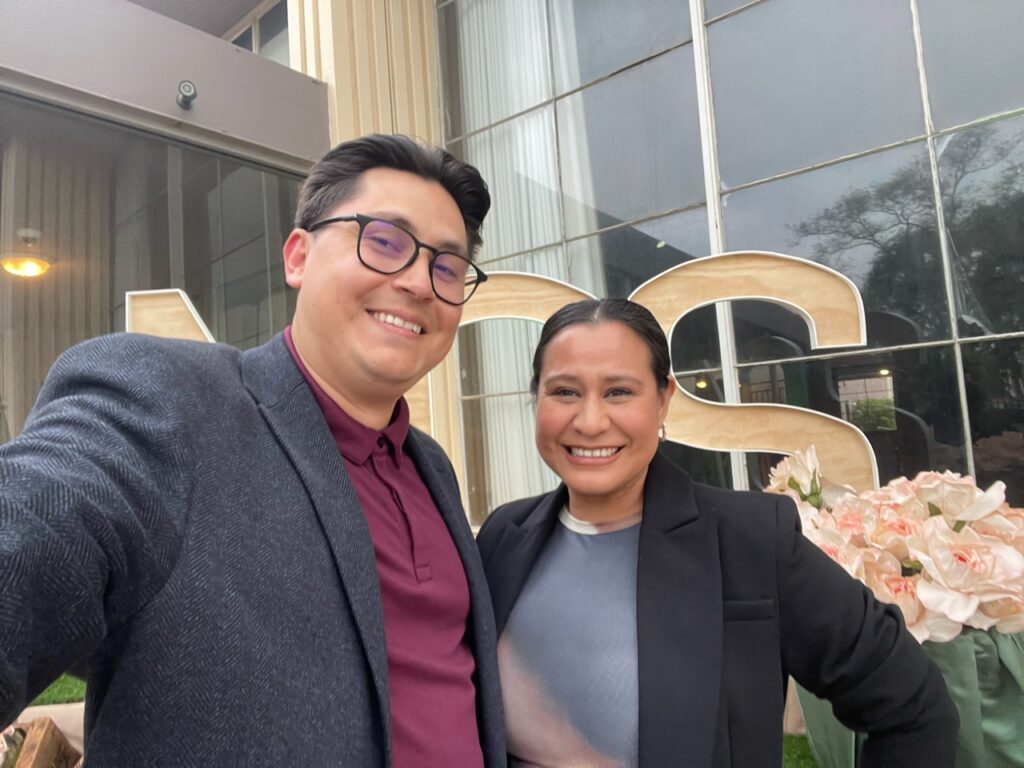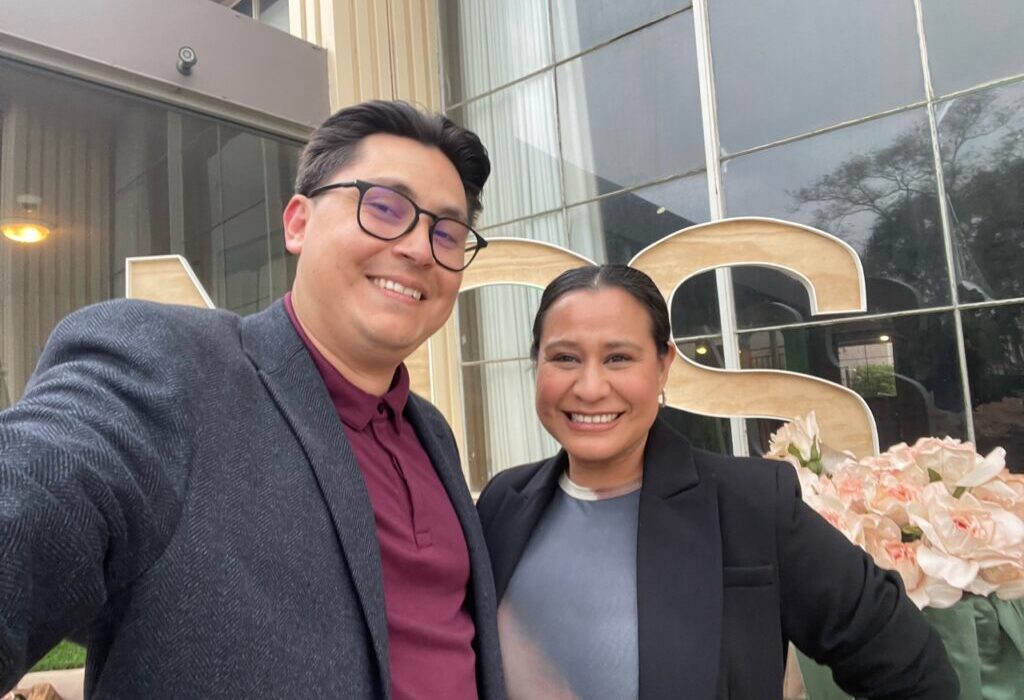By Marlena Brown, contributing writer
In a region often overshadowed by nearby creative capitals, a quiet but powerful cultural movement has been unfolding in the Inland Empire in recent years. It’s happening not in corporate galleries or glossy museums, but in street-facing spaces, community corners, and coffee-scented art collectives.
It is a movement being led by men of color who are visual artists, musicians, educators, and storytellers. They are reshaping what it means to create art, build community, and reflect the soul of a place.
For Michael Segura, it started with graffiti. For Cam Gnarly, with a song sung at his grandmother’s kitchen table. For Duan Kellum, it was live screen-printing at a San Bernardino event. For Francis Almendarez, it was the realization that his family’s untold stories held as much value as anything hanging in a gallery.
Their mediums may differ – paint, poetry, beats, and moving images but they share a common truth: that art is more than expression. It’s a tool for visibility. A weapon for transformation. A bridge between people and power.
At the heart of this movement is a deep connection to place. Not just in terms of geography, but in how the land, its people, and its layered histories shape the artists’ work and sense of purpose. For each of them, the Inland Empire is more than a location, it is both canvas and collaborator.
“Art is how we build the world we want to live in,” says Segura, the Executive Director of the Garcia Center for the Arts.
That world wasn’t handed to him, it was organized, painted, and power-washed into existence by volunteers and visionaries like himself. Before the center was officially open, Segura and a group of young community organizers gathered to clean the space, paint its walls, and begin imagining what it could become.
“We just showed up and put in the work,” he recalls. “The first studio I ever had was right here. That space helped me get into my MFA program at the University of New Mexico.”
This blend of artistry and activism runs deep in the Inland Empire’s creative landscape. It’s what you’ll find at Creative Grounds, a studio located in downtown San Bernardino, co-founded by Duan Kellum, a former teacher turned full-time artist. Kellum and his creative partner, Jay, created the kind of art space they would want to hang out in.
“It was kind of selfish at first,” Kellum laughs. “We just wanted a place we would like and want to hang out all the time. But turns out a lot of other people needed that too.”
Now, Creative Grounds hosts screen-printing classes, community art shows, open mics, and Friday morning coffee pop-ups that double as artist salons.
“We’ve had poets crying during spoken word, DJs spinning outside, and families painting over hate speech with love,” Kellum says. “And somehow, it all makes sense here.”
That sense of community, of people gathering around art to connect, grieve, and grow also pulses through the music of Cam Gnarly, a San Bernardino-born artist whose blend of hip-hop, soul, and melody is deeply personal.
“When I was little, my grandma would make us sing at the dinner table,” he says. “That was the first time I saw people respond to me emotionally through music.”
His early love of music led him through choir, school plays, and eventually into freestyle sessions at college parties. “I blended my love for music, singing and freestyling. I realized my voice was my instrument,” Gnarly recalls. “Once I started leaning into that, I knew I wanted to make music.”
Gnarly’s music is rooted in emotional honesty, his lyrics touching on joy, heartbreak, and the journey in between. “We’re all just trying to make sense of ourselves,” he says. “If I can do that through music, maybe it helps someone else do the same.”
That same spirit of self-reflection guides the work of Francis Almendarez, an interdisciplinary artist and assistant professor at Cal State San Bernardino, who uses photography, sound, and video to archive the stories often left out of textbooks and art history.

“I grew up in South Central L.A., watching TV that didn’t reflect me,” Almendarez says. “So, I started asking: where are our stories? Who’s telling them?”
For Almendarez, storytelling is survival. His work often includes collaboration with family; his mom, dad, and aunts whose lived experiences become part of the art itself. “Sometimes the process of creating art heals more than the finished piece,” he says. “It’s a way of honoring one another, reclaiming memory, and passing it forward.”
In the Inland Empire, those memories matter. “Spaces like the Garcia Center or Creative Grounds, those are our archives” Almendarez adds. “They carry wisdom you don’t find in books. They hold our histories.”
In a place where creative infrastructure has historically been underfunded, each of these artists are building something lasting. Whether through murals that spark conversation, music that moves emotions, or workshops that pass on the tools of expression.
“It’s not about institutions validating us,” Almendarez says. “We validate each other by showing up, by creating, by continuing the work.”
Each artist’s work has grown out of a personal journey, but their paths intersect around shared values: authenticity, accessibility, and a deep commitment to holding space for others.
From organizing art walks and mural projects to mayoral forums and park cleanups, Segura’s mission was clear: reclaim public space through creative expression.
“Somebody told me, ‘You’re a social practice artist,’” Segura recalls. “That clicked. I realized I wasn’t just painting; I was organizing. I was building dialogue. I was using art as a tool for connection and change.”
Using art as a tool for connection and change is something Kellum witnesses firsthand. “We’ve invited local artist to feature their art in our gallery, hosted open mics, Day of the Dead celebrations, youth classes, and even protests against hate,” he says. “We wanted to create a space for the community to come and feel safe and express themselves and they do.”
Gnarly uses art as a tool for self-connection and reflection. “It’s about giving people something honest. Something spiritual. My newer songs are like mantras, musical reminders of faith, perseverance, and self-acceptance. If I’m going to speak, I want it to mean something,” Gnarly says.
Almendarez echoes that urgency. “I don’t want to make work that floats above reality,” he says. “I want it to touch something deep in people, especially those who’ve never seen their lives reflected in art.”
These artists are not only telling their own stories, but they are also building platforms where others can tell theirs.
“You want to change the world,” Kellum says. “But maybe the real power is in changing how someone sees themselves.”
Maybe that’s how movements begin. Not with a grand opening or viral moment, but with four men of color in four different mediums, each finding their voice, and using it to build up the community around them.

